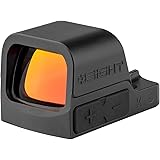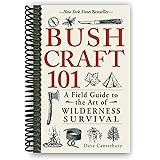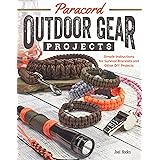Setting up for a successful day at the shooting range often involves a familiar struggle: juggling multiple bags, forgetting essential items, or worrying about the security of your valuable firearms and accessories. The challenge of a disorganized range trip can detract from your training, costing you precious time and even peace of mind.
Fortunately, with a strategic approach to your **range bag** and **range gear** setup, these issues can be effectively managed. The video above offers a firsthand look into one shooter’s well-thought-out system, showcasing how a dedicated hard case and meticulous organization can streamline your range experience. This article expands on those insights, providing a comprehensive guide to building your ultimate range loadout, focusing on efficiency, security, and preparedness for any scenario.
Choosing Your Foundation: Hard Cases vs. Soft Bags for Range Gear
The first decision in optimizing your **range gear** involves selecting the right primary container. The video highlights a Seahorse 930 (or 830) hard case for single-day trips and a larger Pelican 1650 for multi-day excursions. This distinction is crucial for understanding the various demands of different shooting adventures.
Hard cases, like the Seahorse and Pelican models, offer superior protection against impact, water, and dust. They are ideal for transporting expensive firearms and sensitive optics, especially when security is a top concern. The speaker specifically chose his Seahorse case because it perfectly accommodates a 12.5 upper, a common challenge with more compact cases like the Pelican 1530.
Imagine if your gear could withstand an accidental drop or unexpected downpour without a second thought; that’s the peace of mind a quality hard case provides. For extended trips, the Pelican 1650’s ample space and multiple locking points make it suitable for a complete loadout, securing everything from multiple firearms to a full plate carrier setup. While soft range bags offer convenience and lighter weight for quick trips, they often lack the robust protection and security features of their hard-shell counterparts.
Essential Internal Organization: Maximizing Space and Accessibility
Once you have your primary case, internal organization becomes paramount. The video showcases a Seahorse case’s organizational attachment, a “placard” or panel designed to keep smaller, crucial items readily accessible. This demonstrates the value of compartmentalization within your **range bag**.
Dedicated pockets and compartments prevent items from shifting, getting lost, or damaging each other during transport. For instance, the speaker keeps sunblock, personal locks, a Vortex rangefinder (an excellent tool for dialing in shots, even at intermediate distances for around $100-$200), and a shot timer easily reachable. A shot timer is invaluable for tracking progress and implementing timed drills, enhancing your training effectiveness.
Consider dedicating specific pouches or zones for different categories of items. Imagine a scenario where you’re on the clock during a competition, and you need to quickly grab your speed loader. A well-organized case means less fumbling and more focus on your shooting.
Critical Tools and Maintenance Supplies for Your Range Bag
No range trip is complete without the necessary tools and maintenance items. The video details a selection of essentials that can make or break your day. An Aimpoint Acro tool, for example, is specifically mentioned for optic adjustments, but a more general multi-tool or a small set of Allen wrenches and screwdrivers can address a wider range of issues that might arise with your **shooting gear**.
CLP (Cleaner, Lubricant, Protectant) is a cornerstone of firearm maintenance, and having a small bottle on hand ensures you can address any cycling issues or give your rifle a quick wipe-down. The speaker’s observation that “everyone always runs dry rifles including myself” underscores the importance of carrying lube. Additionally, specialized items like Burnproof Gear’s suppressor cover are invaluable for handling hot suppressors safely after rapid fire, protecting your hands and preventing accidental burns or damage to other gear.
A few foam earplugs are also a thoughtful addition for those who might forget their primary ear protection or for loaning to a friend. These small items contribute significantly to a smoother, safer, and more productive range session.
Lighting and Power Solutions for Every Shooting Environment
Whether you’re training late into the evening or preparing for a low-light course, proper illumination and power are non-negotiable. The video highlights several crucial lighting components for your **range gear**: a chem light (glow stick), a SureFire handheld light (often associated with brands like Haley Strategic for tactical applications), and a headlamp.
Extra batteries are a must, with CR123s being a recurring need for many modern tactical lights and optics. Taping the battery ends prevents accidental discharge and prolongs shelf life. Imagine the frustration of having your light or optic die mid-drill; carrying spare batteries mitigates this risk entirely. Headlamps are indispensable for hands-free illumination, whether you’re packing up in the dark or conducting night vision drills.
The mention of a dying ‘Spark’ (likely referring to an electronic target indicator or similar disposable light) further emphasizes the need to routinely check and replace consumable power sources. Staying lit means staying in the fight, or at the very least, staying safe and efficient on the range.
Range Day Logistics: Targets, Staplers, and Administrative Items
Beyond firearms and optics, the practicalities of setting up targets and managing drills also require specific tools. A DeWalt staple gun and a ready supply of staples are essential for securing paper targets effectively. The speaker’s quick check for “more staples in here, actually, so I won’t refill it” showcases the importance of having backup supplies and organized storage.
Target pasters (the little stickies) are excellent for covering shot holes on paper targets, allowing you to reuse targets and conserve resources. Tape, a multi-purpose item, can be used for target repair, marking, or even covering sights for advanced shooting drills. Index cards, simple yet versatile, can serve as small targets, scorecards, or prompts for specific drills. These seemingly minor items contribute significantly to an uninterrupted and adaptable training session.
Integrating Tactical Gear: Chest Rigs, Holsters, and Medkits
For shooters who incorporate tactical training into their regimen, the **range bag** often houses more than just direct shooting essentials. The video features a Spiritus Thing Two (or Thing One) chest rig, a popular choice for carrying magazines, an admin pouch for phones and snacks, and crucially, a medkit.
The speaker’s emphasis on having a medkit on “all my chest rigs or plate carrier” is a critical safety principle. Imagine a situation where an accident occurs; immediate access to a trauma kit can be life-saving. Even if you don’t keep one permanently attached, transferring a dedicated medkit to whatever gear you’re using that day is a responsible practice.
A Safariland holster for a Glock 19, compatible with a standard belt attachment, allows for versatile use during drills or competitions. Pairing this with additional ear protection (beyond helmet-mounted options) ensures comfort and safety, especially during prolonged shooting sessions. These tactical components bridge the gap between casual range practice and more serious training scenarios.
Firearm and Magazine Management: Secure Transport and Organization
The core of any **range bag** is, naturally, the firearms and ammunition themselves. The speaker meticulously organizes magazines in a Supreme bag, including T-mags and Glock 19X/17 mags. This strategy helps prevent losses, as “it’s happened before. I’ve lost multiple P-mags already.” Counting mags before and after a range session is a simple yet effective way to maintain accountability.
For pistols, Savior pistol bags are used for a Glock 19X and an Aero Precision pistol lower with a 12.5 Aero Precision upper, featuring a Geissele rail and Noveske Pec attachment. Separating upper and lower receivers, especially for rifle platforms, allows for more compact storage and discreet transport. Placing heavier items like firearms and ammunition at the bottom of the case, directly over the wheels if applicable, improves balance and ease of movement.
This systematic approach to firearm and magazine storage ensures that your investment is protected, accounted for, and ready for deployment upon arrival at the range.
Uncompromised Security: Protecting Your Investment
Beyond mere organization, the video delivers a vital final tip: prioritizing the security of your **firearms accessories** and expensive **shooting gear**. The speaker warns about social media exposure, pattern tracking by criminals, and the ease with which unsecured items can be stolen from vehicles.
The solution is simple yet effective: integrate a cable lock with your hard case, securing it to a permanent fixture within your vehicle, such as a seat rail or an anchored point. Even locked vehicle doors offer minimal deterrence against a determined smash-and-grab thief. Imagine stopping for a quick snack after a range trip; those few minutes of unattended gear can be an open invitation for theft.
A cable lock, or even a robust chain, wrapped around an anchor point, significantly increases the time and effort required to steal your case, often deterring opportunists entirely. This added layer of security provides peace of mind, knowing that your valuable **range gear** is protected, allowing you to focus on safe shooting and enjoying your time at the range without constant worry.











